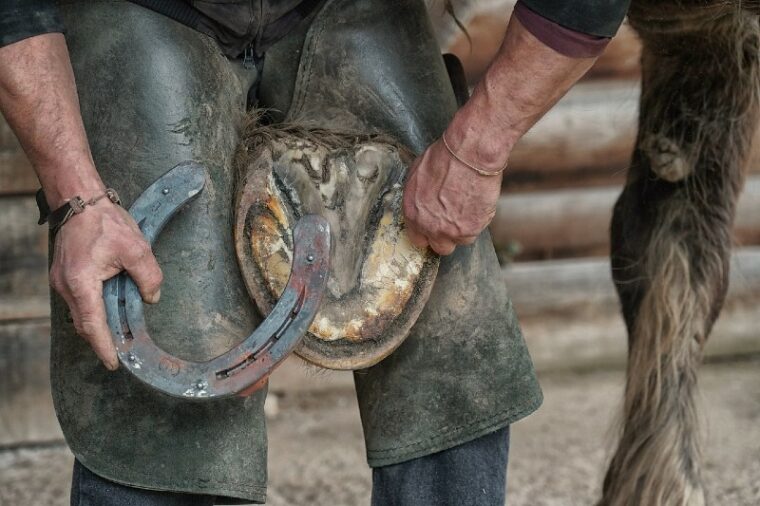
Horse hooves are one of the most essential and iconic parts of their anatomy. Hooves allow horses to be able to stand, walk, canter, and gallop. A horse cannot be truly healthy without healthy hooves. But what are the hooves made out of? What are the different parts of the hoof? The short answer is that hooves are made of keratin, cartilage, ligaments, elastic tissue, and bone. But horse hooves are very complicated pieces of biology and there are entire professions and specialties devoted to horse hooves exclusively. However, we can quickly cover the basics, including the structural matter composing the horse hoof and the three main parts of the hoof that laymen are likely to encounter.
What Are Horse Hooves Made Of? The 5 Materials
1. Keratin
The external part of the outer hoof is called the wall, and it is the part that most people think of when they picture a hoof. The hoof is made up of keratin. Keratin is a common material that makes up things like hair, fingernails, and horns. The keratin in a horse’s hoof keeps it strong and structured.
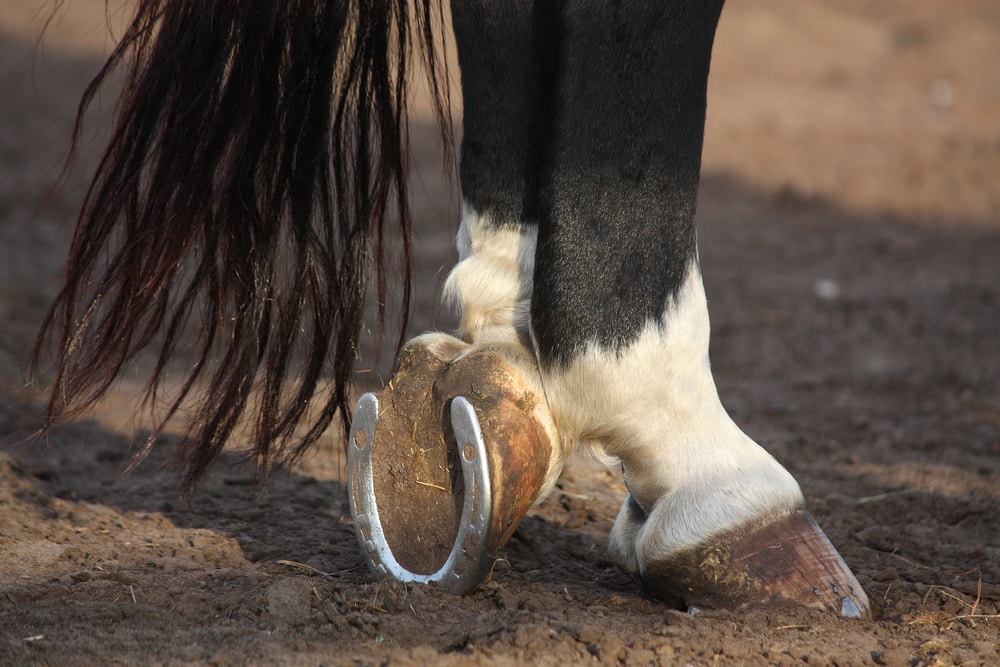
2. Ligament
A horse also has ligaments in their hoof. The ligaments attach the different bone structures of the hoof to each other. Ligaments strengthen and stabilize the horse hoof joints. They play an important role, keeping the bones aligned and providing support for the joints.
3. Bone
Horse hooves also have bones inside them. Bones provide strength and structure to the hooves. Like our bones, these bones are not externally visible. However, these bones can become worn, broken, or infected, which can severely impact the health of the hoof. The main bones inside a horse’s hoof are the pedal bone or distal phalanx, the navicular bone, and the distal middle phalanx.
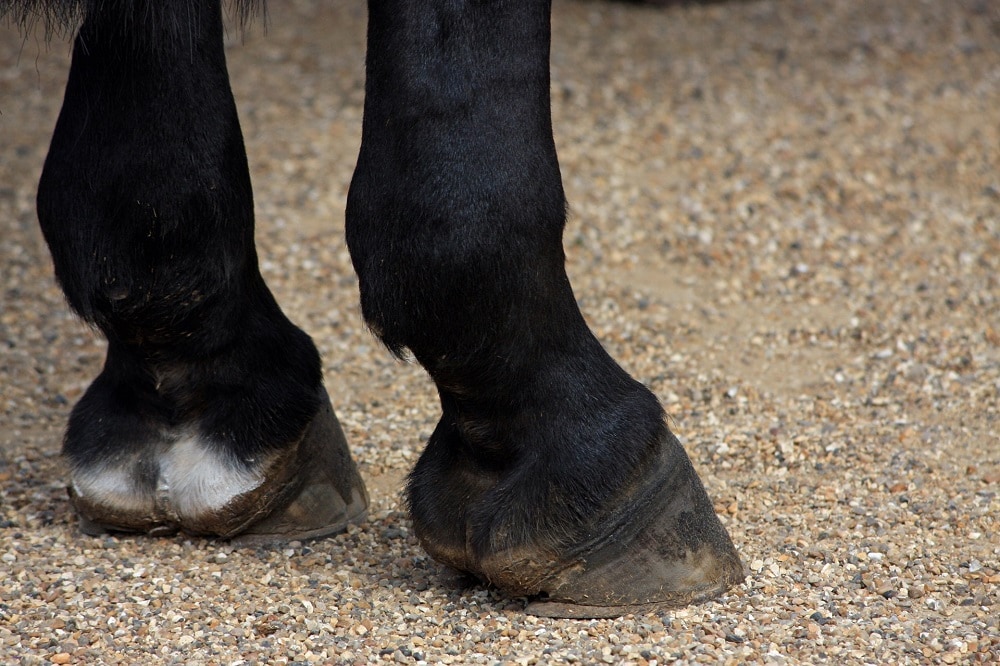
4. Cartilage
The inner part of the hoof is also made up of a pocket of cartilage. Cartilage is softer and more flexible than bone or keratin. This cartilage helps cushion the hard parts of the hoof and is very important to distributing force and weight through the hoof. The largest area of cartilage is called the lateral cartilage, and it resides between the pedal bone or distal phalanx and the second or middle phalanx. Again, all of this resides deep inside the hoof, out of view.
5. Elastic Tissue
The last type of material that makes up a hoof is something called elastic tissue. This is primarily what makes up the horse’s frog, which is a part of the sole that helps provide grip. The frog is not made from keratin or cartilage. This elastic tissue helps the frog bend and move as a horse walks to help them stay upright and steady on its feet.
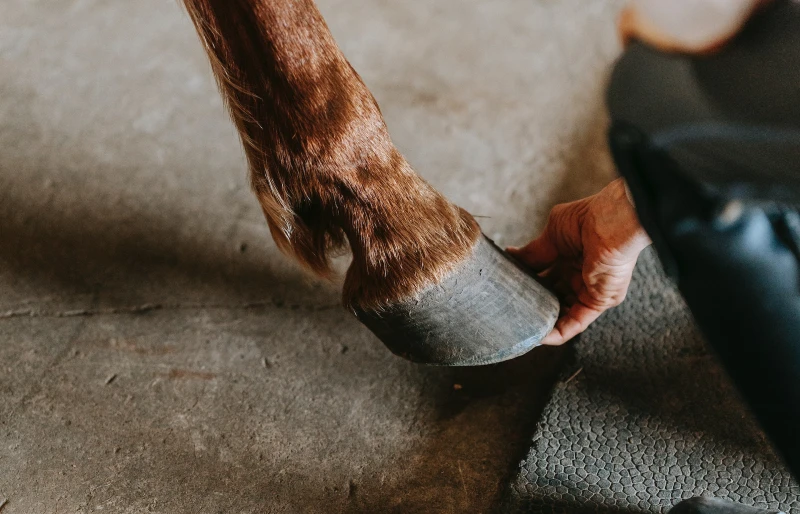
The 3 Main Parts of the Hoof
1. Wall
The wall is the primary part of the hoof. The wall is the hard outer shell that surrounds the inner hoof. The wall is part of the hoof that grows continuously and is made out of keratin. The hoof wall grows steadily and requires trimming and maintenance to keep it at a reasonable length. The hoof wall does not contain any blood or nerves, making it similar to a human fingernail. Fingernails also grow continuously and contain no nerves or blood.
When you imagine the image of a horse hoof, the picture that materializes is often of the hoof wall.

2. Sole
The sole is the flat part of the hoof that makes up the middle part of the wall. Unlike human feet, the sole never touches the ground. The sole resides within the protective shell of the hoof wall. If the sole is making contact with the ground, your horse likely has a potentially serious hoof issue. The sole protects the undersurface of the horse’s foot where the very sensitive laminae connect the hoof to the pedal bone. The sole also contains the frog.
3. Frog
The frog is a V-shaped protrusion in the sole of a horse hoof. The frog should make contact with the ground when a horse is standing on soft material. If a horse’s hoof starts sinking into the ground due to sand, dirt, mud, or something similar, the frog will make contact with the ground and help stabilize the horse. The frog is made up of an elastic tissue that is strong yet supple. The frog makes up roughly 25% of the horse’s sole.
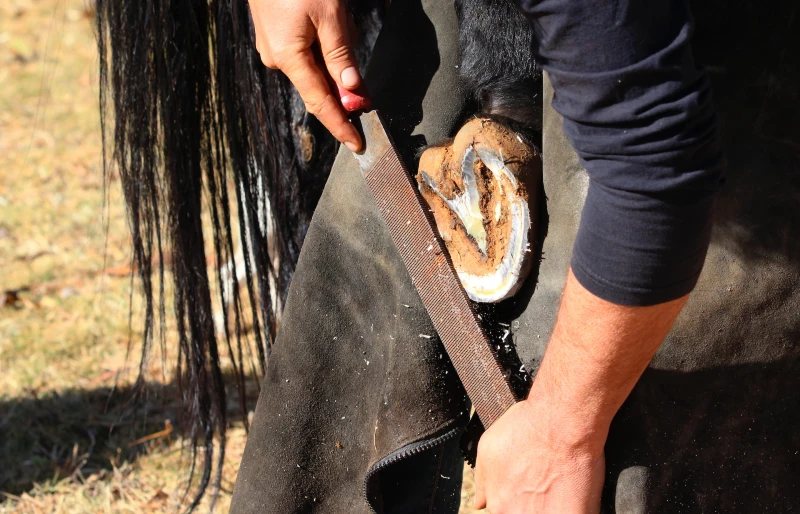
Hoof Health Is Critical
Horses spend the majority of their lives on their feet. Hoof health is vital to the overall health of a horse. A horse with unhealthy hooves can quickly degrade. Some hoof issues can even be fatal. Horses need to be able to walk and run in order to keep away from predators and to be able to effectively roam and graze. Keeping your horses’ feet healthy is analogous to keeping your horse healthy.
Domesticated horses need their hooves to be examined, trimmed, and treated by a trained farrier on a regular basis. It is recommended to have a farrier out to look at your horse’s feet every 3 to 6 weeks. Farriers will trim your horse’s hooves, look for signs of infection or degradation, and will suggest and administer treatment. Farriers are an important part of a horse’s life, and they will help keep the horse upright, sound, and healthy for years to come.
Conclusion
Horse hooves are much more complicated than they appear at first glance. The simple outer shell hides a complex inner core that is vital to a horse’s health. Horse hooves have tissue, cartilage, bone, and keratin inside them. All of this is connected by ligaments to nearby bones and muscles that allow horses to stand, walk, and move properly. Never neglect the health of your horse’s hooves because it can quickly lead to severe and worsening health problems.
- Related Read: Overgrown Horse Hooves: Rehabilitation Maintenance Guide
Featured Image Credit: aglaya3, Pixabay










